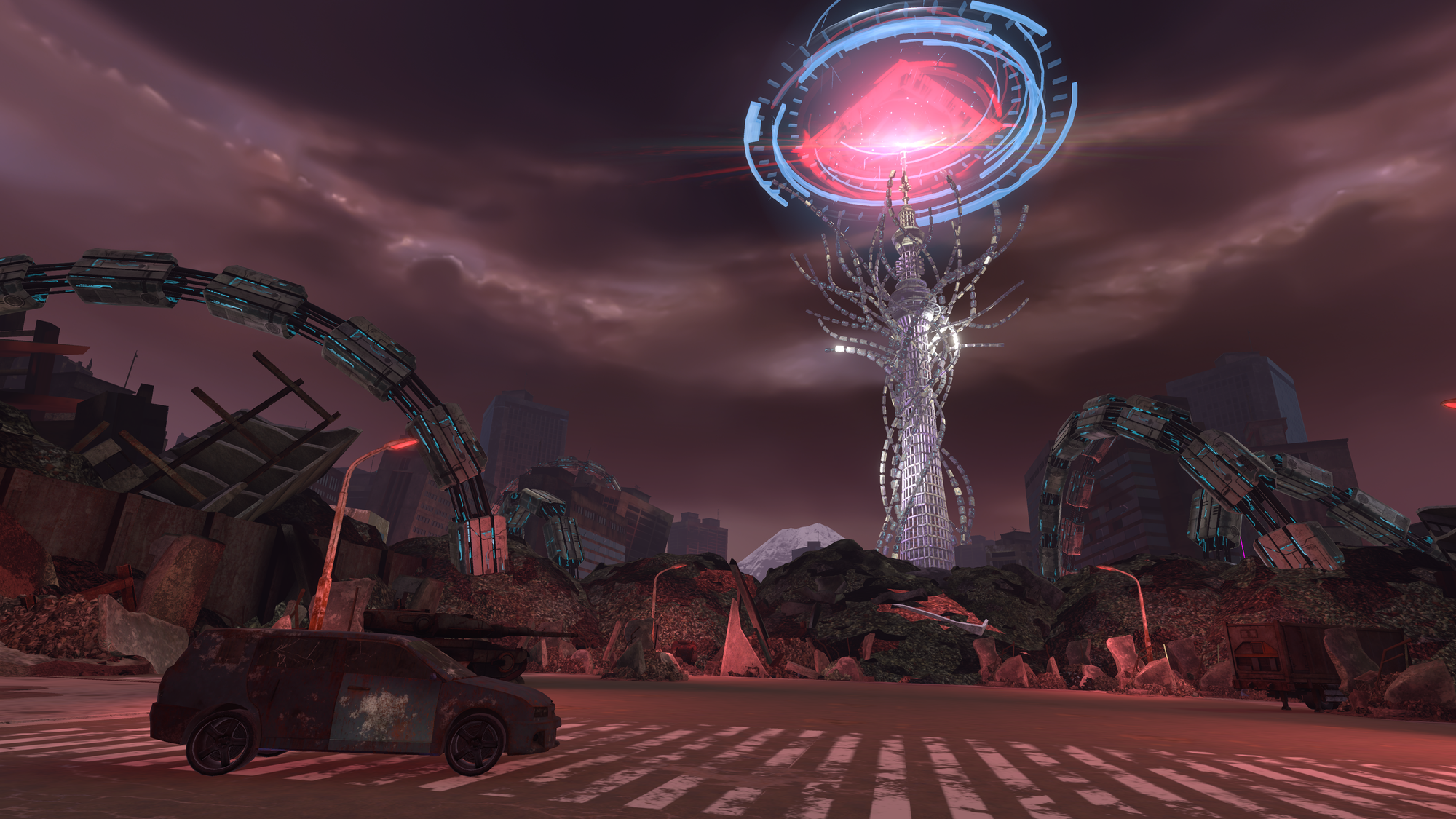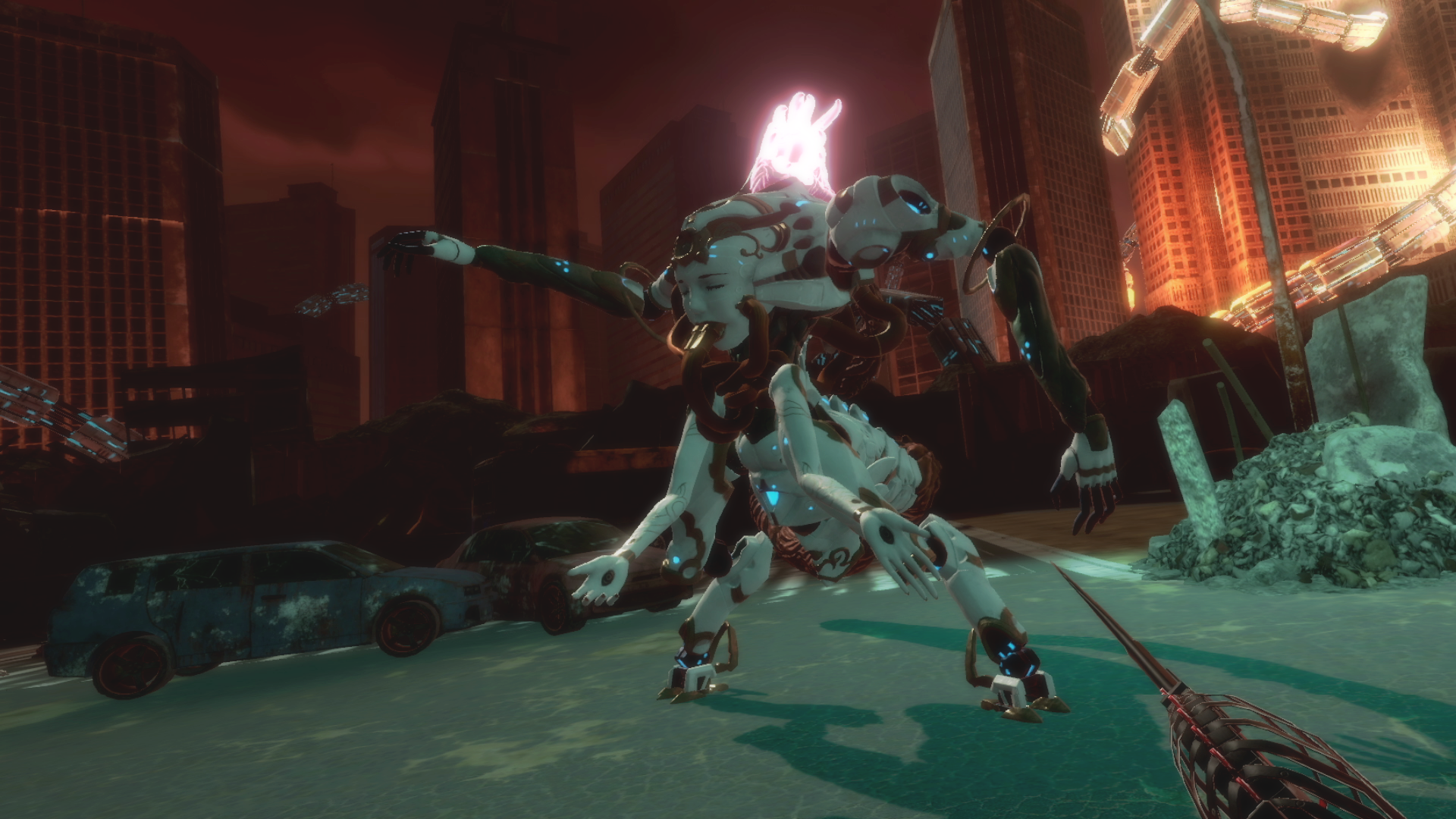SOUL COVENANT offers an intriguing action RPG premise with poor melee combat and a repetitive campaign. Read on for our full review.
RPGs have been one of my favorite genres for decades, long before modern VR emerged. They can be time-consuming, and my free time isn’t what it used to be, yet the rich storytelling often found within continues drawing me in. Mix that with the hack-and-slash combat, and there’s the potential for a compelling VR adventure. Unfortunately, SOUL COVENANT is not that game.

SOUL COVENANT takes us to a post-apocalyptic near future where a genocidal AI-led army has destroyed Tokyo using robotic weapons known as the ‘Deus Ex Machina.’ You represent the last bastion of humanity struggling to survive. It’s not a particularly original premise, though SOUL COVENANT intertwines this with its ever-present and often gruesome interpretation of death and rebirth.
That’s particularly evident with Avatars, soldiers infused with memories of past heroes. Everyone wields a ‘Scapegoat,’ one of several main weapons crafted from the bones of your fallen comrades with some great designs. The religious symbolism continues throughout, best exemplified by the main antagonist, Adam, and an android gendered as female who assists between missions called Eve.
This might feel impactful if the story weren’t so poorly structured. Whenever the game lets you jump into these short missions, it pulls you away soon after to continue telling a story that isn’t particularly compelling. Each mission is sandwiched between two narrative segments that make poor use of the medium, presenting you with 2D cutscenes like a stylized theatre mode. It’s a very formulaic approach, and my interest disappeared fast.

Things don’t improve once missions begin thanks to shallow melee combat that rarely amounts to more than waggling your hands. The variety between each Scapegoat is interesting and attributes like attack power can be improved using ‘Monad Points’ earned during missions. I like how they transform into more powerful variants when wielded with two hands.
This creates what should be an interesting trade-off. You can’t access your shield when taking the two-handed approach or using the ranged ‘Demonic Burst’ weapon, which gradually charges up by collecting Monad shards. These are all nice ideas that don’t mean much when combat feels unsatisfying. I would’ve liked more physicality in fights.
My other major concern is that SOUL COVENANT’s missions quickly become repetitive. They all have very similar objectives that amount to little more than killing all the robots as each wave appears. Bosses have some additional moves and help move along the narrative, but these don’t offer anything thrilling. There’s very little challenge and I secured top marks on every mission first try. Playing with friends in co-op doesn’t make this more interesting, either.

Comfort
SOUL COVENANT uses artificial stick-based locomotion with no option for teleportation movement. You can dash to dodge incoming attacks, only snap turning is supported for the camera. You can choose your dominant hand, calibrate your height, and activate a motion vignette.
While the visuals looks considerably better on PSVR 2, SOUL COVENANT’s Quest version feels like a significant downgrade. Many character models look rough, and dialogue not matching the animation was very distracting. That doesn’t appear to be a problem with the localization, though. Even when characters weren’t speaking, their mouths often continued moving.
SOUL COVENANT Review – Final Verdict
It’s hard not to feel disappointed by SOUL COVENANT. Thirdverse has created a somewhat intriguing premise here that’s completely squandered by unsatisfactory combat, repetitive gameplay and a lacking narrative that screams of wasted potential. If you’re after an anime-inspired fantasy action game, you’d be better off looking at Ruinsmagus; SOUL COVENANT is not worth it.

UploadVR uses a 5-Star rating system for our game reviews – you can read a breakdown of each star rating in our review guidelines.





